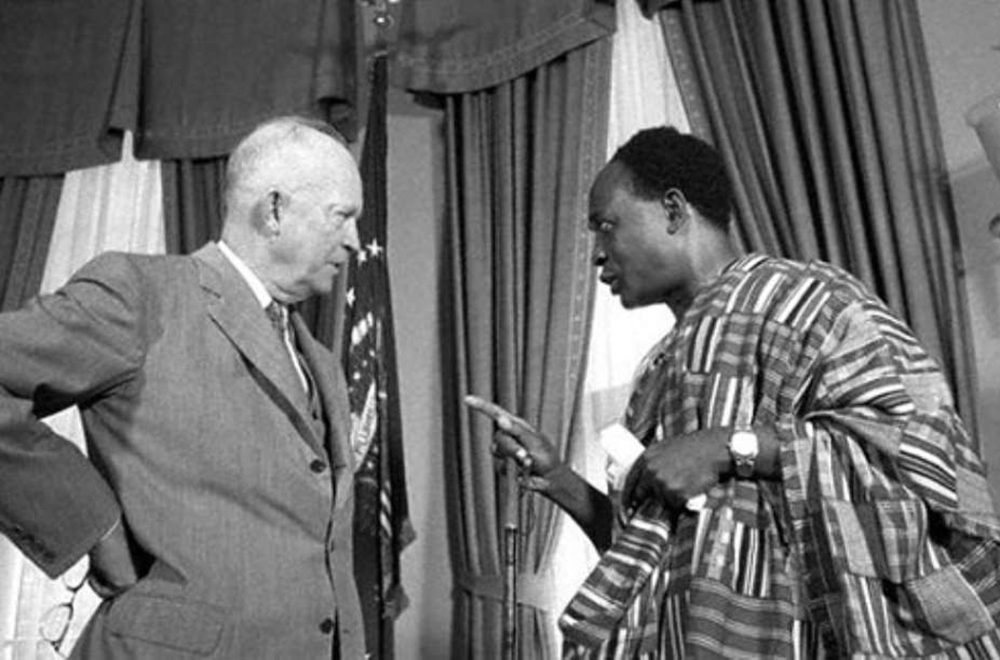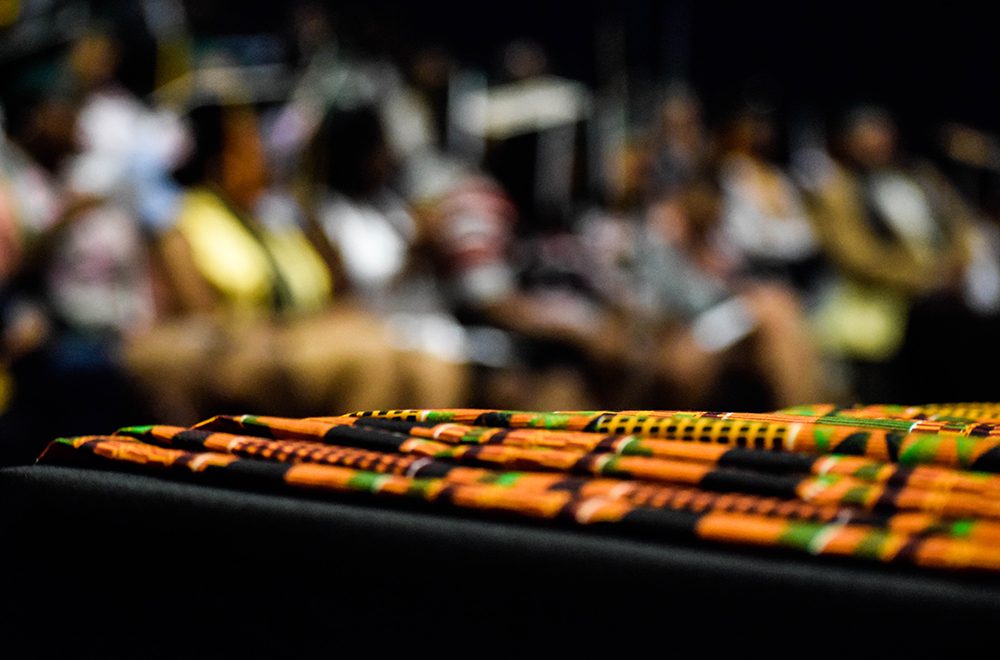Donning of the Kente: More than a graduation tradition, a ‘symbol of achievement’

Hold a piece of kente cloth in your hands and you can’t help but take notice — the bright colors beautifully and artfully woven together make a statement.
That colorful statement is the idea behind the University’s Donning of the Kente ceremony, a celebration of cultural achievement that takes place each commencement season, acknowledging the academic achievements and future aspirations of students from underrepresented groups.
-
Sponsored by the UNC Charlotte Alumni Association and the Black Alumni Chapter, the ceremony utilizes the West African kente cloth as a symbol of African American heritage, bestowed upon the graduate to commemorate the significance of graduation.

Campus Connection: Beginning in 2016, the ceremony has become an annual tradition, offering a more personal alternative to the University’s large, formal commencement ceremony. Now in its sixth year, the ceremony has grown, garnering roughly 200 student participants.
-
The curated event is designed to be intimate, aiming to truly acknowledge and celebrate each individual. It features personal touches like the singing of “Lift Every Voice and Sing,” a reading of every participant’s personal bio as well as their future aspirations, culminating with the kente stole being draped around each graduate.


On the record: Conceived by students and campus leaders, the introduction of this ceremony was long overdue. It remains true to its original intentions, rooted in engagement, family and community.
“Given how diverse Charlotte’s campus is and how proud we are as an institution of that diversity, it was simply time for something like this to be created to reflect that student population, speak to the soul of what we stand for as a campus community and to make everyone feel appreciated,” said Solomon T. Franklin ’03, ’06, ’11M, assistant director of business operations at UNC Charlotte, who as student engagement chair of the Black Alumni Chapter when the Donning of the Kente ceremony was established played a vital role in starting the program.
“Participating in the Donning of the Kente ceremony, wearing that cloth, underscores that your achievement is something bigger than yourself,” said Brandon Nixon ’16, who was integral in launching the Donning of the Kente tradition on campus after interacting with students from other institutions that held similar events. “You go to a school and dedicate a lot of your time and energy during those years. And to hear your name, personal bio and future plans read aloud, by someone you admire and respect, recounting the ways you shaped your college experience and how it has positioned you to be successful moving forward, is a powerful reminder of just how important each individual is and how much of an impact you can have on campus.”

Brandon Nixon ’16 (front row, third from right) joins his classmates at the inaugural Donning of the Kente ceremony in 2016.
Deep Dive: To understand the rich history of the kente cloth, Akin Ogundiran, professor of Africana Studies, Anthropology and History at UNC Charlotte, shares his insight on the historical significance of the kente cloth and its role in West African culture.
What is kente cloth?
-
Kente is a woven cotton cloth with intricate and, usually, colorful designs. Kente is a product of a long history of weaving tradition in West Africa that goes back thousands of years, but the multicolored and iconographic representations associated with kente originated from the Ewe and Akan people of Ghana and Togo about 400 years ago. Kente textile is woven as single strips on a horizontal loom comprising a row of parallel threads, sometimes different colors. The manipulation of these threads by the weaver gives kente the ornate design for which it is famous. A narrow band of cloth about four inches wide is usually the product of this weaving method. Several strips are carefully arranged and hand-sewn together to create the fabric of desired size and form.

Why is it important historically?
-
Kente is worn on special occasions in West Africa, especially Ghana and Togo. In the past, it was very expensive, and only the wealthy and those in the upper class could afford it. But more readily available imported cotton threads for weaving have made kente clothing more affordable in the past decades. Nevertheless, it is still a luxury for many in West Africa.
Kente weavers are artists whose designs tell visual stories, depict societal values and communicate the wishes and sentiments of the wearer to the general public.
The Kente was adopted as the symbol of Black Pride during the African American cultural revival movement and the Civil Rights Movement of the 1960s. It became a popular political and cultural symbol soon after Kwame Nkrumah, the first president of Ghana, donned kente cloth on his visit to Dwight Eisenhower’s White House in 1958.

Why do graduates don the kente cloth to commemorate graduation?
-
The kente stole is a symbol of achievement and overcoming hardship. It pays homage to the ancestors’ sacrifices, reunites African Americans with Africa, and asserts their hope and confidence in the future. It is generally believed that the use of the kente strip as graduation stole began at West Chester University in 1993.
But its use has grown beyond graduation celebrations. For example, Kente stoles are used in Black churches by ministers, preachers and other high-ranking church officials. Fraternities, irrespective of race, use kente on various campuses. In other African and African Diaspora countries, from Nigeria to Jamaica, kente is worn at college graduation to symbolize African heritage pride.

What is the significance of the colors?
- Traditionally, Kente stoles in the United States were one or more of the four colors that symbolize the Pan-African Movement and Black Pride consciousness — black, red, green and yellow. Black represents the people of African descent; red stands for the shared blood (kinship) of Black people and the blood that continues to be shed in the struggle for survival; green represents Africa’s fertility and abundance; and yellow refers to Africa’s wealth. For example, the kente stole of the Africana Studies Department at Charlotte has mainly employed the red and yellow motifs.
As kente stole enters the mainstream, its palette has diversified beyond these historical colors. The range of motifs is as limitless as the human imagination. Traditional weavers continue to make kente in Ghana and Togo, and recent Ghanaian/Togolese immigrants to the United States continue this heritage craft.